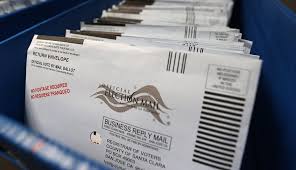Mail-In Ballots
In the months leading up to the the 2020 General Election there was much debate about mail-in ballots. Some people seemed intentional on conflating the mail in ballots proposed for this election from the standard absentee ballots that most states use in every election.
The mail in ballot voting that went on in 2020 is NOT the same as the standard absentee voting.
Absentee Voting
Absentee voting is when a voter is unable or chooses not to vote in person on election day. In order to vote by absentee, the voter must first request an absentee ballot. In many states, the absentee ballot requests requires personally identifying information like a driver’s license number or the last four of one’s social security number. The exact requirements vary by state, but many, if not all, follow some form of this process.
2020 Mail In Ballots
In the last General Election, nine states and the District of Columbia mailed out ballots to everyone on their voter rolls while other states relaxed absentee voter requirements.
This means that in those nine states, every registered voter received a ballot in the mail, even if they didn’t request it. This not only made ballots susceptible to out-dated voter rolls, but also created a myriad of possibilities for fraud.
The reports we are getting of “dead people voting,” incapacitated voters, ballot harvesting (where people went into institutions and mass filled in ballots for people), out of state voters, and more make a lot more sense when you understand the free-flow of mailed out mass ballots.

